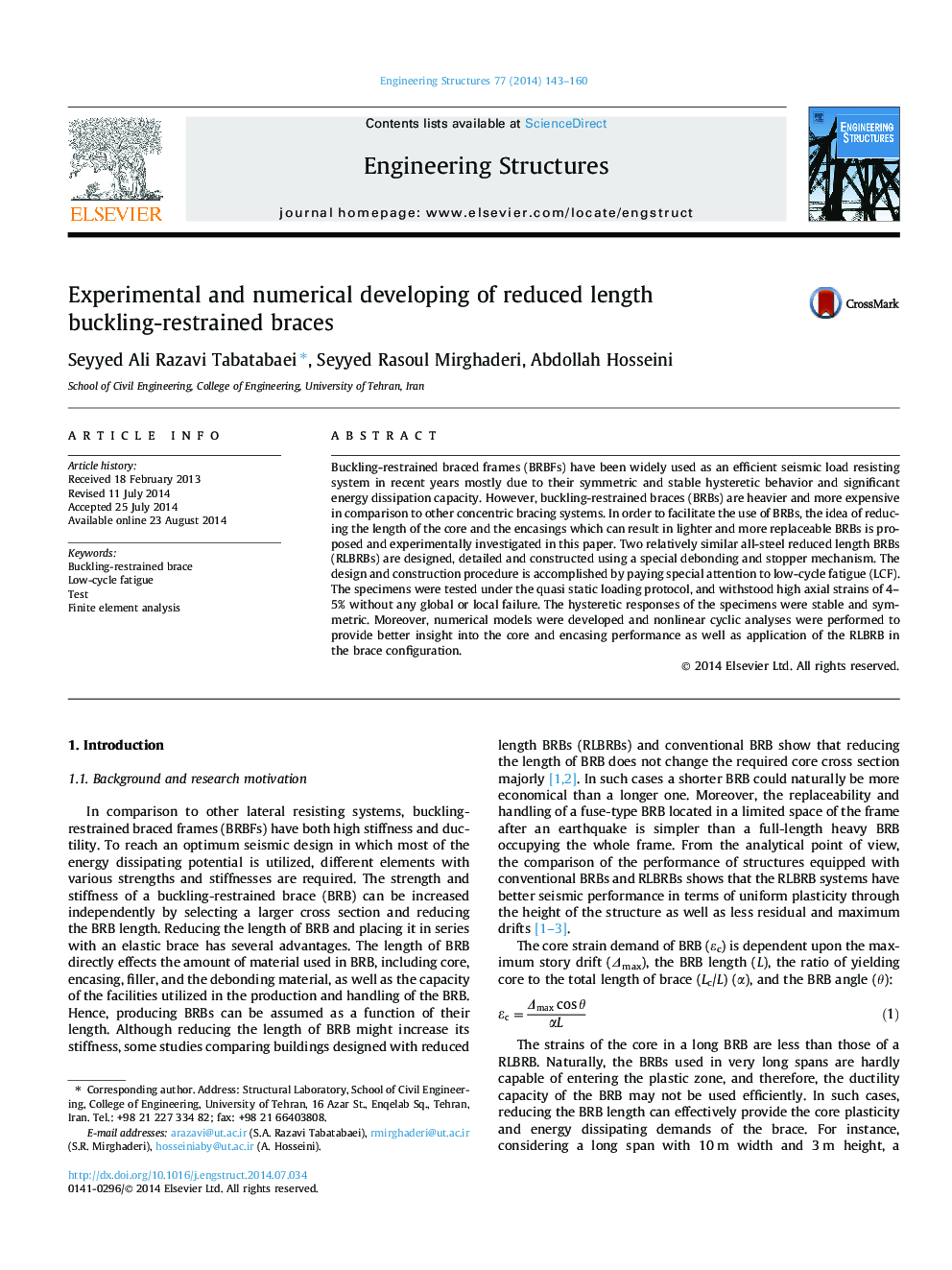| Article ID | Journal | Published Year | Pages | File Type |
|---|---|---|---|---|
| 266538 | Engineering Structures | 2014 | 18 Pages |
•Two all-steel reduced length BRB specimens are tested to 4% and 5% axial strain.•The results of the tests show proper performance of the specimens.•A new proposed stopper and debonding mechanism worked successfully.•The conducted finite element modellings are in good agreement with the test.
Buckling-restrained braced frames (BRBFs) have been widely used as an efficient seismic load resisting system in recent years mostly due to their symmetric and stable hysteretic behavior and significant energy dissipation capacity. However, buckling-restrained braces (BRBs) are heavier and more expensive in comparison to other concentric bracing systems. In order to facilitate the use of BRBs, the idea of reducing the length of the core and the encasings which can result in lighter and more replaceable BRBs is proposed and experimentally investigated in this paper. Two relatively similar all-steel reduced length BRBs (RLBRBs) are designed, detailed and constructed using a special debonding and stopper mechanism. The design and construction procedure is accomplished by paying special attention to low-cycle fatigue (LCF). The specimens were tested under the quasi static loading protocol, and withstood high axial strains of 4–5% without any global or local failure. The hysteretic responses of the specimens were stable and symmetric. Moreover, numerical models were developed and nonlinear cyclic analyses were performed to provide better insight into the core and encasing performance as well as application of the RLBRB in the brace configuration.
